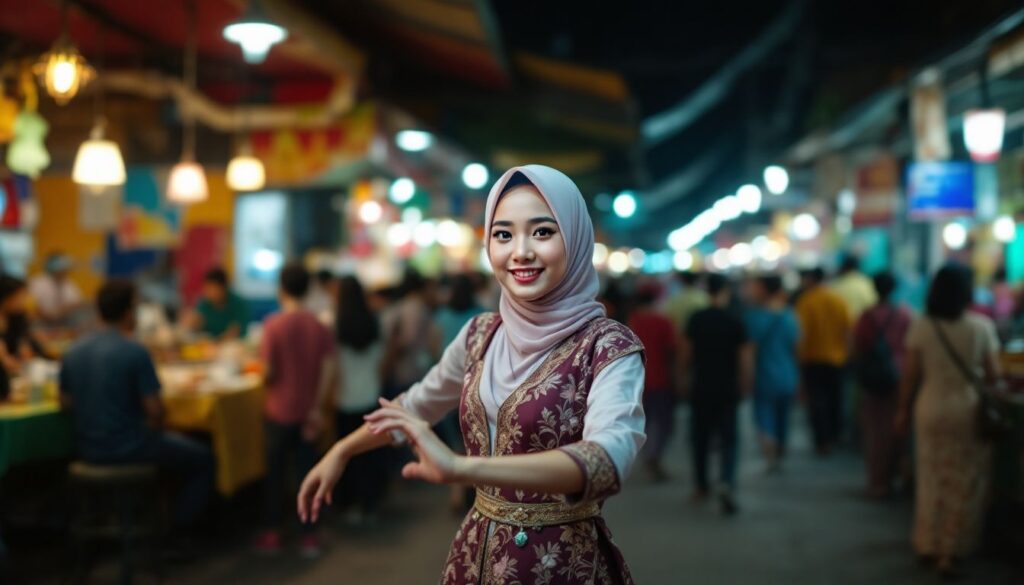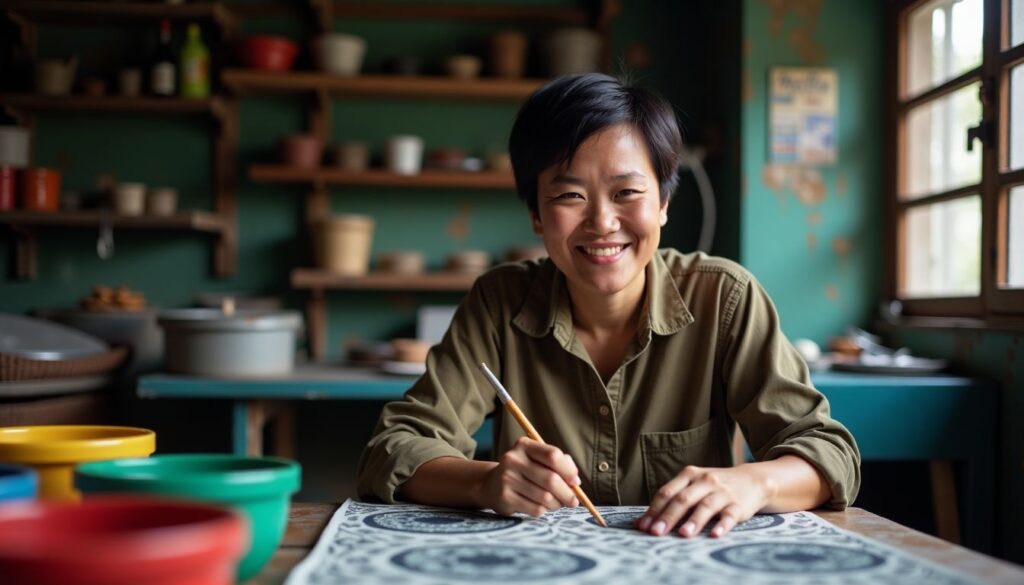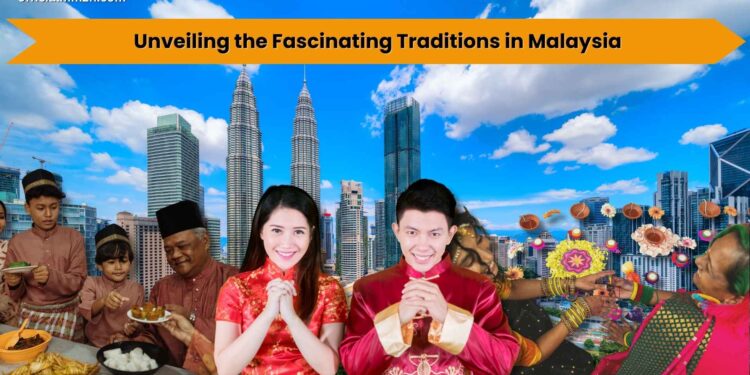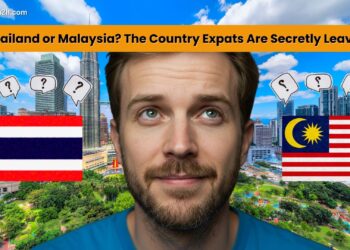Exploring The Rich Traditions in Malaysia
Understanding Malaysia’s rich traditions can be quite a challenge. With over 60 different ethnic groups shaping its culture and heritage, it’s no wonder. That’s why I took the time to delve into these traditions and share my findings with you.
Let’s explore the vibrant tapestry of Malaysian traditions together, including the contributions of various groups in Malaysia.
Key Takeaways
- Malaysia has over 60 ethnic groups, including Malays, Chinese, Indians, and indigenous peoples. Each group has its own traditions and festivals.
- The country was ruled by the Portuguese, Dutch, and British. These rulers influenced Malaysia’s language, buildings, and customs.
- Major festivals in Malaysia are Hari Raya Puasa, Chinese New Year, Deepavali, Christmas, and Hari Merdeka. These festivals show the country’s diverse culture.
- Malaysian food is very varied, reflecting the influences of different cultures in Malaysia. Street foods like Mee Goreng Mamak and Laksa are popular staples of Malaysian culture. Each ethnic group has its own special dishes that contribute to the diverse Malaysian culture.
- Traditional Malaysian arts include batik fabric, weaving, woodcarving, and metalwork. These crafts highlight the country’s rich heritage.
Cultural Diversity and Heritage

Malaysia is filled with many different ethnic groups, each with their own traditions. The history of foreign rule has shaped its rich cultural heritage.
Ethnic Groups and their Traditions

Malaysia is home to many ethnic groups, each with unique traditions. The Malays are the largest group and celebrate Hari Raya with vibrant feasts and prayers, which are central to their Islamic traditions. They wear traditional clothes like the Baju Melayu and Baju Kurung during special occasions.
Chinese Malaysians honor their culture through festivals like Chinese New Year, featuring lion dances and colorful decorations. They speak Mandarin and other Chinese languages, creating a rich linguistic landscape.
Indian Malaysians add to the cultural mix with their Hindu traditions. During Deepavali, they light oil lamps and share sweets with family and friends. They often wear sarees and salwar kameez for celebrations.
Indigenous peoples in Sabah and Sarawak maintain their heritage through dances, music, and crafts that are integral to Malaysian culture. Each group brings its own customs and languages, making Malaysia a vibrant and diverse country to explore.
Influence of Historical Colonization
Colonial rule shaped Malaysia’s culture deeply. The Portuguese arrived first in the 16th century, bringing new foods and building forts like those in Malacca. The Dutch took over in the 17th century, influencing trade and local customs.
British control began later and lasted until Malaysia gained independence in 1957. Under British rule, English became important, and modern education systems were established. These powers left lasting marks on Malaysia’s language, architecture, and traditions.
When Malaysia became a sovereign nation in 1963, it blended these colonial influences with its rich local heritage, creating a unique and diverse culture today.
Major Festivals and Celebrations
Malaysia celebrates many vibrant festivals that reflect its diverse culture and the harmony among different groups in Malaysia. I love experiencing Eid, Chinese New Year, Deepavali, and Christmas with the locals.
Hari Raya Puasa (Eid Ul-Fitri)
Hari Raya Puasa, also known as Eid al-Fitr, celebrates the end of Ramadan, the fasting month for Muslims. I watch as families come together for prayers and joyful feasts. People give to charity and visit friends and relatives.
Homes shine with colorful decorations, and delicious traditional dishes fill the tables.
Hari Raya Puasa brings families closer and strengthens our community bonds.
Chinese New Year
Chinese New Year is one of the major festivals in Malaysia. I enjoy seeing vibrant lion dances and bright lanterns in Kuala Lumpur and Penang. Chinese temples light up with red banners and decorations.
Families come together to share delicious meals like dumplings and sweet rice cakes, which are part of the rich Malaysian culture. Fireworks fill the sky, welcoming the new lunar year. This festival brings joy and good luck to the Malaysian Chinese community.
Deepavali/Diwali
Deepavali, also known as Diwali, is a major Hindu festival in Malaysia. I watch families light oil lamps and decorate their homes with colorful rangolis. The festival celebrates the victory of light over darkness and good over evil.
Malaysian Indians, who follow Hinduism, gather to pray to gods like Lakshmi and enjoy feasts with traditional sweets. Fireworks light up the night sky, and everyone wears new clothes during Hari Diwali.
This celebration shows the rich culture and traditions of Malaysia. Diwali also highlights the multiculturalism in the country, where different ethnic groups share their customs and beliefs, enriching the culture in Malaysia.
Christmas and Hari Merdeka (Independence Day)
Moving from the vibrant lights of Deepavali, Malaysia embraces other significant celebrations. These events highlight the nation’s unity and pride.
- Christmas
- Celebrated on December 25th, Christmas is a major festival for Christians in Malaysia.
- Homes and streets are decorated with lights and Christmas trees.
- Churches hold special services, and families gather for festive meals.
- Gift-giving and singing carols are common traditions during this time.
- Hari Merdeka (Independence Day)
- Celebrated on August 31st, Hari Merdeka marks Malaysia’s independence from British rule in 1957.
- The day begins with the national flag-raising ceremony at Merdeka Square.
- Parades showcase Malaysia’s diverse cultures and military prowess, celebrating the history of Malaysia.
- Fireworks light up the night sky, symbolizing freedom and national pride, a significant aspect of the history of Malaysia.
- Citizens wear the national colors and participate in community events across the country.
These celebrations reflect Malaysia’s rich culture and the harmonious coexistence of its diverse ethnic groups.
Traditional Malaysian Cuisine
I love exploring Malaysian street food and diverse dishes, each offering unique flavors inspired by the country’s rich heritage—keep reading to learn more.
Street Food Culture
The streets of Malaysia are full of delicious food. I love trying Mee Goreng Mamak and spicy Laksa from the stalls. Roti John and Rendang are favorites I often eat. Sweet treats like Apam Balik and Popia Basah are also everywhere.
Bubur is a warm, comforting dish many enjoy. This street food culture highlights the rich Malaysian cuisine. It makes traveling in Malaysia exciting for anyone who loves food. Next, I’ll share signature dishes from different ethnic groups.
Signature Dishes by Ethnicity
I love exploring Malaysia’s diverse food shaped by different ethnic groups. Malay dishes like Nasi Lemak use coconut milk and spices to make tasty rice. Chinese cuisine offers Char Kway Teow, stir-fried noodles with shrimp and soy sauce.
Indian food brings Roti Canai, a flaky bread served with curry. Peranakan dishes mix Chinese and Malay flavors, such as Laksa, a spicy noodle soup. Each meal shows Malaysia’s rich culture and traditions.
Trying food in Malaysia, I find Indonesian and Thai influences as well. Satay skewers are marinated in spices and grilled perfectly. From East Malaysia, dishes like Hinava use fresh fish with herbs.
Japanese-style sushi and Western roasts add more variety to the culinary landscape of Malaysian culture. The street food scene is lively with many tasty options. These signature dishes highlight the vibrant culture and ethnic diversity of Malaysia.
Arts and Crafts
I love exploring Malaysia’s arts and crafts, from vibrant batik fabrics to intricate wood carvings—come discover their beauty with me!
Batik and Weaving Techniques
I love seeing Malaysian artisans create batik. They use wax to make bright patterns on fabric. Each design has special meanings. Weaving is another key art. People use handlooms to make beautiful textiles.
These techniques show the rich culture of Malaysia, reflecting the diverse groups in Malaysia. Embroidery adds fine details to clothes, reflecting traditions passed down through generations.
Traditional Malay Woodcarving
Traditional Malay woodcarving showcases Malaysia’s rich culture. I admire the intricate designs on temples and traditional homes. Artisans use local woods from Peninsular Malaysia and Borneo.
These carvings often feature floral patterns and symbolic motifs. Woodwork has been a key part of Malay heritage for generations.
Metal smithing complements the woodcarving art. Craftsmen create tools and decorative pieces that enhance the carvings. This blend of wood and metal highlights the skill of Malaysian artists.
Exploring these crafts gives insight into the Malays’ dedication to their traditions. Next, I will explore the major festivals that bring Malaysia’s culture to life.
Conclusion
Malaysia’s rich traditions and vibrant culture are truly special. From colorful festivals to tasty food and stunning arts, there’s so much to enjoy. I loved exploring the diverse heritage that makes Malaysia unique.
Visiting this country was a memorable journey. I can’t wait to share more about Malaysia’s amazing culture.
FAQs
1. What are the main religions in Malaysia?
Malaysia has several religions, including Islam, Buddhism, Christianity, Hinduism, and Chinese traditional beliefs. Islam is the state religion, and many Malays are Muslim. There are also significant communities of Buddhists, Christians, and Hindus, especially among the Chinese and Indian populations.
2. How does Malaysia celebrate its holidays?
Malaysia celebrates many holidays that reflect its diverse culture. For example, Eid al-Adha marks the end of Ramadan for Muslims, while Thaipusam is a major Hindu festival. Independence Day honors Malaysia’s freedom, and Chinese New Year is celebrated with festivals and family gatherings. These holidays showcase the customs and traditions of different ethnic groups.
3. What languages are spoken in Malaysia?
In Malaysia, the national language is Bahasa Malaysia. English is also widely spoken. Other languages include Mandarin Chinese, Tamil, and various indigenous languages like those of the orang asli. This linguistic diversity reflects the country’s multicultural society.
4. What are some traditional dances and music in Malaysia?
Malaysia has rich traditions in dance and music. Traditional Malay music often includes instruments like the gamelan. Dance forms like shadow play and traditional Malay dances are popular. These performances are important parts of cultural festivals and celebrations, showcasing the heritage of different ethnic groups.
5. What are important cultural influences in Malaysia?
Malaysia’s culture is influenced by many groups, including Malays, Chinese, Indians, and indigenous peoples. Historical ties to the British Empire and nearby countries like Indonesia and Portugal have also shaped Malaysian society. These influences are seen in the food, language, and everyday customs across the country.
6. What are some popular places to visit in Malaysia?
Malaysia offers many interesting places to explore its culture, showcasing the rich history of Malaysia. The Petronas Towers in Kuala Lumpur are iconic landmarks. Mount Kinabalu is popular for nature lovers. Museums across the country display the history and traditions of Malaysia. Visitors can also experience traditional markets, cultural festivals, and beautiful landscapes throughout peninsular and East Malaysia.




